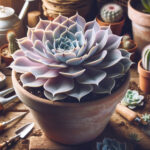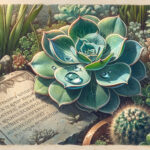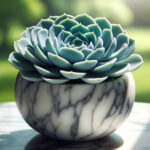Introduction
Welcome to the world of Echeveria, the ever-charming rosette star of the succulent family. These plump-leafed beauties have made a name for themselves on windowsills and in gardens worldwide, known for their ease of care and wide variety of colors and forms. But even the most seasoned Echeveria aficionados can face a puzzling conundrum: lower leaves that seem to wither and fall at the drop of a hat. Fear not, you’re not alone in this; it’s a common tale whispered among the pots and planters of these desert jewels.
Imagine you’re sipping your morning coffee, admiring the palette of greens, blues, and purples that paint your beloved succulent corner when you notice something amiss. The bottom leaves of your prized Echeveria are starting to look a tad transparent, a little less plump, and—cringe—they’re detaching with little to no effort. It’s a sight that might set off alarm bells; after all, these are not the fall leaves swirling in the autumn wind, these are succulent leaves saying goodbye too soon.
But fret not! This introductory handshake with the topic of ‘echeveria losing bottom leaves’ is not the beginning of an obituary for your plant friend. In fact, it’s a nudge to become a succulent sleuth, to delve into the whys and hows, and learn the fixes that can bring your Echeveria back to its full glory. Let’s jump into the detective work and unravel this leafy enigma together.
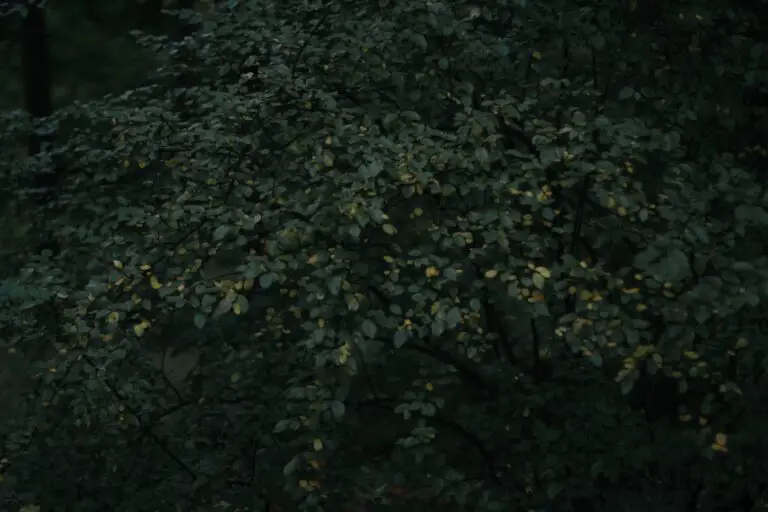
The Natural Life Cycle of Echeveria
Ever noticed your echeveria losing bottom leaves and started to panic? Hold that thought! It’s all part of a grand design, one that Mother Nature has perfected over countless cycles. For those not in the succulent know, echeverias are persistent little plants, flaunting rosettes that would make any botanist’s heart skip a beat. But like any living being, they go through life stages, and losing some bottom leaves is as natural as a tree shedding its autumn leaves.
Imagine, if you will, a seasoned echeveria. It has seen its fair share of the sun’s dance across the sky. As it matures, these lower leaves, which have served their time, graciously bow out, making way for new growth. Think of it as the plant version of ‘out with the old, in with the new.’ It’s not a cry for help; it’s a sign of a thriving, evolving succulent. This cycle ensures the plant’s energy is focused on nurturing the fresh, sprightly leaves that bask in the sun’s embrace.
Let’s bring this to life with an example. Picture a robust echeveria, anchored in well-draining soil, soaking up that sweet, sweet sun. One day you notice a bottom leaf turning yellow, shriveling up. It’s not the plant’s swan song—it’s merely a chapter in its leafy narrative. It’s the old guard making room for the rookies.
If you’re itching for visual proof, let’s dive into a lush digital world where photosynthesis reigns supreme. Enjoy this tranquil video showing the echeveria in all its glory, from young sprout to seasoned succulent:
Now, while leaf shedding is standard protocol in the echeveria playbook, don’t get complacent. A little TLC goes a long way. Stay vigilant for signs of distress that could indicate other issues. If your green buddy is dropping leaves faster than a deciduous tree in November, or the leaves turn transparent and mushy, it’s time to reassess. For those echeveria enthusiasts eager to delve deeper into the world of succulent pampering, leaf through this insightful echeveria care guide.
To sum up, a bottom leaf or two parting ways with your echeveria is not a cause for alarm. It’s a rite of passage for these endearing succulents. Keep providing that sweet, sweet love (and appropriate care), and you’ll witness the circle of life unfold right on your windowsill!
Understanding Leaf Loss
Are you noticing your echeveria losing its bottom leaves? Before you panic, let’s unpack the reasons behind this leafy conundrum. It’s normal to feel a twinge of worry when you first spot those lower leaves going AWOL, but it’s not always a sign of plant catastrophe. Sometimes, it’s just your echeveria’s way of saying, “Out with the old, in with the new!”
Leaf loss in echeverias can be a bit like a seasoned magician’s act – some of it is just natural showmanship, while other times, it’s a SOS signal wrapped in a leafy disguise. To be a savvy plant detective, you need to know the difference between an echeveria’s regular leaf-shedding routine and the red flags that spell trouble.
Think of your plant as a bit of a minimalist, regularly shedding its bottom leaves in a process akin to leaves falling casually from trees in autumn. This is senescence, a natural phase in a leaf’s life where it gracefully bows out to make room for fresh, sprightly foliage. It’s just the echeveria’s lifecycle doing its thing.
However, if your trusty echeveria starts dropping leaves like hotcakes and you’re finding more leaves on the soil than on the plant, it’s time to play plant sleuth. Are the leaves yellowing, becoming mushy, or drying out like crispy autumn leaves far before their time? These are the signs your plant’s in distress, and it could be raising the flag on issues like overwatering, underfeeding, or extreme temperature swings. Let’s not ignore those cry-for-help clues!
Understanding the context is key – a solitary leaf bidding adieu here and there is usually no cause for alarm. But if your echeveria is staging a leaf drop rebellion en masse, it’s sending you a secret message: “Help me, I’m not feeling my best!” And that’s when you need to step in with some TLC and a detective’s eye for detail.
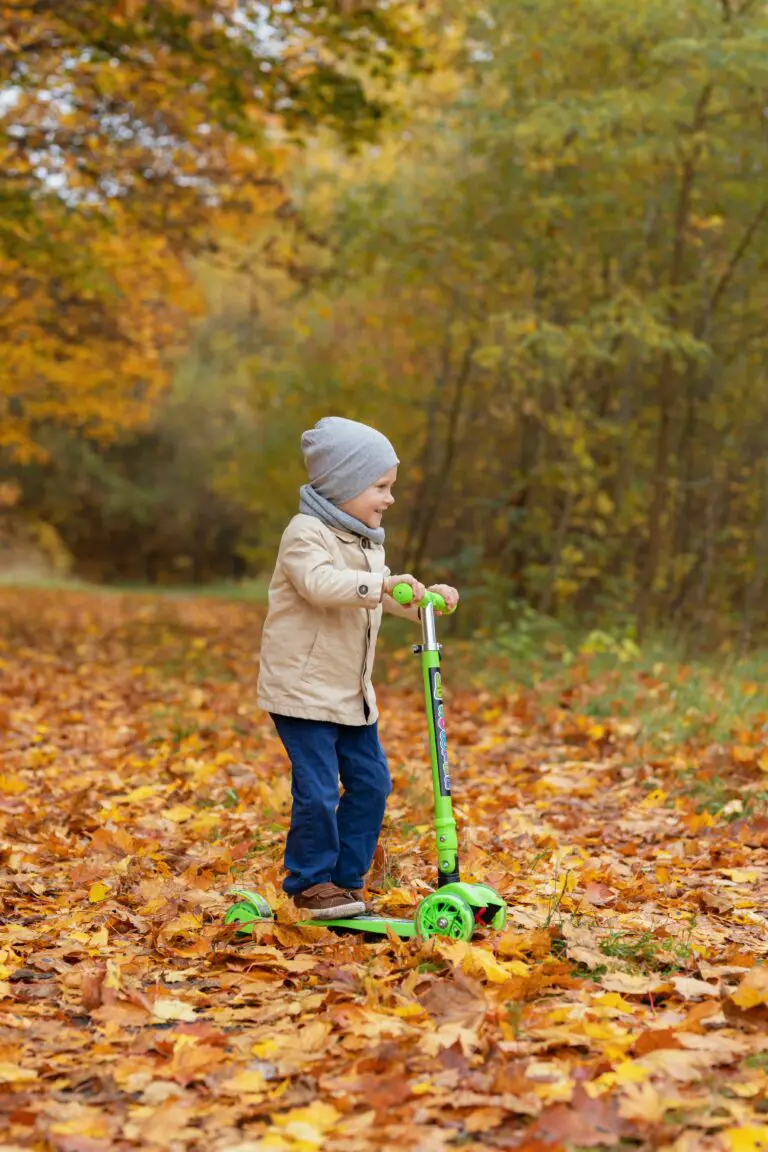
Remember, every echeveria is a unique individual with its own set of leafy letters. Learn to read them, and you’ll be well on your way to ensuring your echeveria stays as vibrant and leafy-lush as it ought to be. After all, a happy echeveria is all about that balance – just enough leaf loss to show it’s thriving, with enough resilience to give those pesky problems the boot.
Common Causes for Concern
Standing out with their sculptural beauty, Echeverias are the gems of many plant collections. Yet, sometimes they start shedding their lower leaves, leaving their owners puzzled. Let’s unearth some of the mysteries behind why your echeveria is losing bottom leaves and offer solutions to restore its luster.
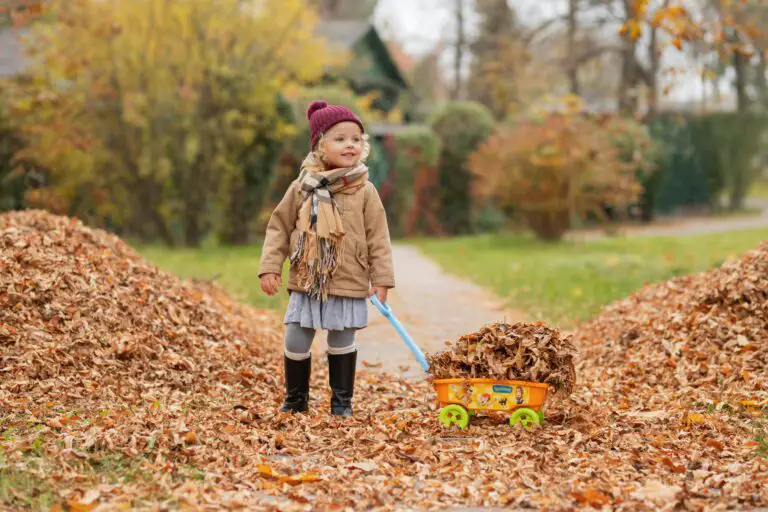
Overwatering: A Classic Culprit
Too much love can be a bad thing, especially if it comes in the form of overwatering. Echeverias, true to their succulent nature, prefer a dry spell between waterings. If their soil feels like a soggy sponge, you’re drowning their roots! Spotting signs like yellowed, translucent leaves? It’s time to ease up on the watering and let the soil dry out.
Underwatering: A Cry for Help
Equally damaging is underwatering. Echeverias are hardy, but they can’t survive on neglect. When parched for too long, they draw moisture from their bottom leaves, leading to a withered appearance. If the leaves at the base feel crispy and dry, it’s a desperate SOS. Establish a regular watering routine to quench their thirst just right.
Nutrient Shortages: The Invisible Thief
While echeverias aren’t greedy feeders, they still need a balanced diet. Nutrient deficiencies rob your echeveria of its rich color and plump leaves. Witnessing a pale palette or a skinny silhouette? Consider a well-rounded succulent fertilizer to return those stolen hues and curves.
Lighting Issues: Finding the Sweet Spot
Imagine succulent sunbathing gone wrong. Echeverias adore light, but scorched, bleached leaves suggest they’ve had too much. Conversely, low light makes them stretch awkwardly towards the source. The key is a balance of bright, indirect light—like that perfect spot where sun rays paint patterns but can’t singe.
Uninvited Guests: Pesky Pests
Sometimes, it’s the smallest adversaries that cause great defeats. Mealybugs, spider mites, and aphids see echeverias as a buffet. These pests suck the life out of leaves, causing them to drop prematurely. Spotted some sticky residue or minuscule critters? Arm yourself with insecticidal soap or neem oil to evict these unwelcome tenants.
These common issues can turn echeveria care from a walk in the park to a real head-scratcher. Remember, like all plants, they communicate their needs in subtle ways. By becoming a detective in your own garden, you can crack the case of why your echeveria is losing bottom leaves and nurse it back to full health.
Analyzing the Symptoms
Spotting the early warning signs can be the difference between a thriving Echeveria and one that’s sending SOS signals from its lower leaves. This tell-tale trail of dropped foliage might seem alarming, but it’s merely your succulent communicating with you. Think of them like silent cries for help—each fallen leaf a message that we need to decode.
First things first, get to know your Echeveria like the back of your hand. Observe the plant’s usual vibrancy and posture, noting the firmness and color of the leaves. When things are going well, they resemble a perfectly arranged bouquet—compact, colorful, and cheerfully fleshy. Healthy bottom leaves are typically stout, remain attached, and the rosette appears full and lush.
Now, let’s talk distress signals. A healthy leaf that decides to part ways with your Echeveria should leave you pondering. Unhealthy leaves, on the other hand, often become discolored, maybe adopting a yellowish or brownish hue before losing their grip. They may start feeling soft or mushy—like overripe fruit on a summer day. These Leaves of Concern are not the memento you want from your beloved succulent.
Picturing this, imagine two Echeverias side by side. One is the epitome of succulent splendor, standing tall with glistening leaves. The other, well, it’s a bit droopy, with bottom leaves resembling fallen soldiers around its pot. If you’re witnessing the latter, your green pal is whispering (or rather, leaf-dropping) for help.
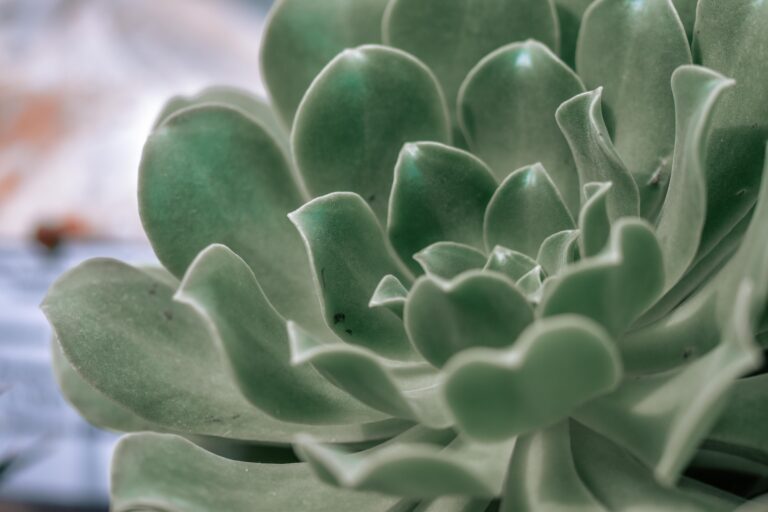
Real-life examples can often paint the best picture. Consider Jerry’s Echeveria, stationed proudly on the kitchen windowsill. When its lower leaves suddenly went limp and detached, Jerry became a detective, scrutinizing for causes like overwatering or poor light. Then there’s Priya, whose Echeveria started shedding leaves soon after she switched to a new fertilizer. A quick intervention, swapping back to her tried-and-true brand, brought her succulent back from the brink.
Analysing each symptom methodically will set you on a course for succulent recovery. A change in leaf texture, a modification in color, or a leaf abdicating its throne could each spell trouble, but recognising the signs is the first step to making things right. Stick with us as we delve further into the enigma behind the Echeveria exodus and, more crucially, how to put a stop to it.
Preventative Measures for a Thriving Echeveria
Are you watching your cherished echeveria shed its lower leaves like tears from a weeping willow? Fear not, my green-thumbed friends! Let’s nip this in the bud with some preventative measures that will keep your succulent as plump and happy as a cat in a sunbeam. Remember, the goal is to mimic the native habitat of these desert darlings, so let’s get into the nitty-gritty of ideal watering, soil mix, and environmental zen.
Watering Woes Be Gone! Imagine you’re a dapper camel, storing water for those drought days – that’s your echeveria. Over-watering is the fast track to root rot city, and echeverias don’t carry passports for that trip. To hydrate your plant pal correctly, we’re talking a ‘soak and dry’ method. Drench the soil like a monsoon then let it dry out completely before the next watering. This isn’t a daily tea time; think more of a ‘once-in-a-while’ watering fiesta!
Soil: The Echeveria’s Mattress. Just like Goldilocks, your echeveria wants its soil just right – not too dense, not too light. The ticket to the perfect mix is one part potting soil with one part perlite or coarse sand. This combo makes for a dreamy, well-draining bed that prevents moisture from loitering around your echeveria’s roots. It’s like a fluffy pillow that quickly brushes off a night’s rain.
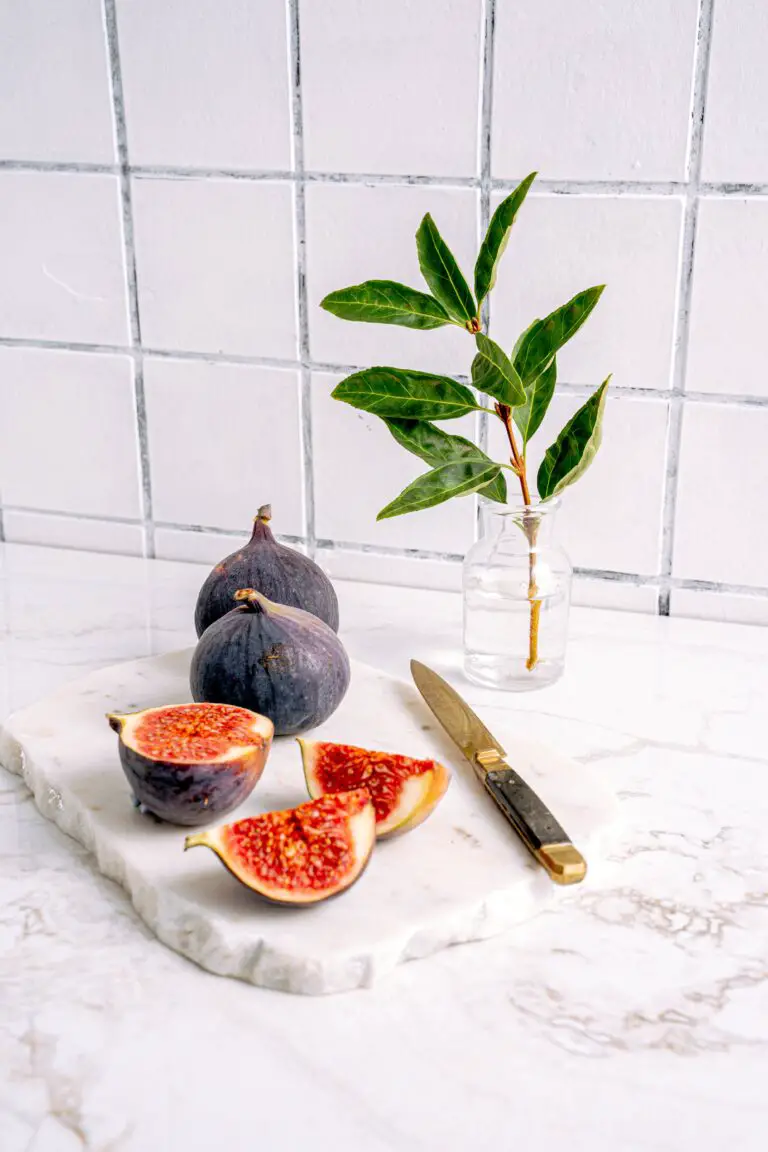
Creating the Perfect Echeveria Estate. Echeverias flourish under the spa-like treatment of bright, indirect light. Picture your echeveria lounging in the morning sun like it’s on the beach in Cancun, soaking in the gentle rays but dodging that scorching midday sunburn. And just like us, these succulents prefer to stay cozy warm during the day (65-70°F or 18-21°C) and cooler at night (can handle a mild chill down to about 50°F or 10°C).
With these preventative strategies, you’ll transform your echeveria care routine into a sustaining ritual that promotes robust health and shields against premature leaf loss. Remember, echeverias aren’t high maintenance – they’re just specific, like a boutique hotel guest with a refined taste for service. Treat them right, and they’ll reward you with a year-round display of architectural foliage and, if you’re lucky, bell-shaped blooms worthy of a humblebrag on your favorite social media platform.
Treatment and Care for Affected Plants
If you’ve noticed your Echeveria’s lower leaves looking a little under the weather, fear not! It’s time to roll up our sleeves and dive into plant ER mode. Let’s troubleshoot, shall we?
Step 1: Evaluation
First off, observe your Echeveria like a detective. Are the bottom leaves drooping, drying, or yellowing? These could be SOS signals from your succulent, indicating it’s time for a change. It’s crucial to detect the difference between natural leaf loss, which happens occasionally as the plant grows, and abnormal leaf shedding.
Step 2: Hydration Station
The watering can is your ally, but also your adversary. Water your Echeveria deeply yet infrequently, ensuring the soil dries out between watering sessions. Are you guilty of a little over-enthusiasm with the H2O? If so, it’s time to back off and let your plant breathe, as overwatering is a common culprit for leaf loss.
Step 3: Light It Up
Sunshine is the best medicine for your Echeveria. These sun-worshippers thrive in bright, indirect light. Is your plant reaching out like a sunbather? It might be craving more light. But, like avoiding a sunburn at the beach, be wary of scorching your succulent with too much direct sunlight.
Step 4: Temperature and Air Flow
Your Echeveria doesn’t enjoy drafty windows or the shivers. Keep it in a stable environment where the temperature doesn’t drop below 50°F (10°C). A steady climate without sudden changes is the cozy blanket your succulent desires.
Step 5: Nutrient Boost
Is your Echeveria on a diet? It might need a nutrient boost. A balanced, succulent-specific fertilizer used sparingly during the growing season can provide the necessary pick-me-up. Think of it as a vitamin for your verdant friend.
Step 6: Pest Patrol
Pests like aphids and mealybugs can be uninvited guests on your Echeveria. Keep an eye out for these pesky party crashers and show them the door with a gentle insecticide or neem oil treatment. A healthy plant is a happy plant!
Remember, every Echeveria is an individual with its own personality. By watching for signs and acting quickly, you can restore your succulent’s vigor. A little TLC goes a long way. Happy gardening!
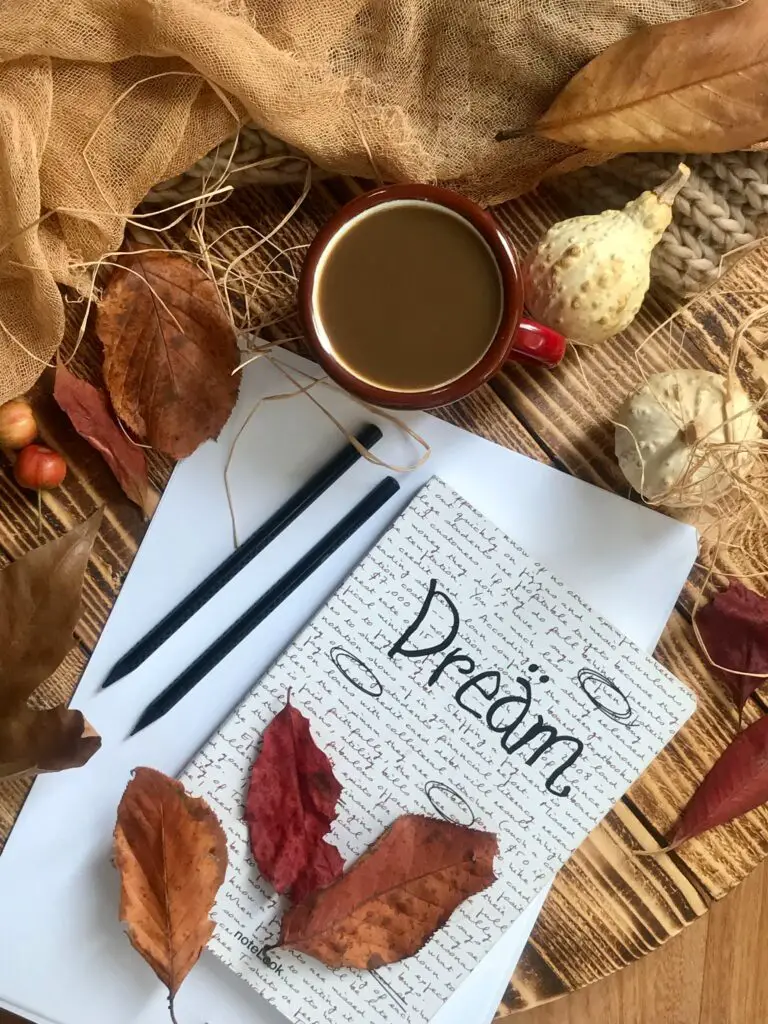
Expert Opinions on Echeveria’s Dwindling Foliage
Are the bottom leaves of your Echeveria falling prey to an unseen adversary? It’s a common tale among succulent enthusiasts. To shed light on this leafy predicament, we’ve dug into the wisdom of seasoned horticulturists and those with a green thumb who’ve weathered the trials and triumphs of Echeveria care. Let’s explore their insights and snip away at the problem causing your Echeveria’s bottom leaves to wither away.
Understanding Echeveria’s Bottom-Leaf Ballet
Succulent specialists often liken Echeveria care to a delicate dance of drought resistance and succulence. With this balance in mind, they pinpoint the most common culprit for bottom leaf loss: inconsistent watering. Like seasoned growers sharing tales from the potting bench, they recount how underwatering can lead to a brittle ballet, where the lower leaves crispen before taking their final bow. Overwatering, on the other hand, initiates a soggy slow dance that inevitably leads to root rot and a cascading leaf drop.
Nutrient Imbalance and Its Foliage Fallout
Another factor our plant pundits highlight is the soil’s storyline. Echeveria, they declare, are not voracious feeders, yet a nutrient imbalance can send them into a spiral. A grower from the sun-drenched hills of California divulges her experience where an excess of nitrogen reverberated through the roots, causing the leaves to loosen and lie listless. Conversely, nutrient deficiency can turn the verdant vibrancy of Echeveria into a lackluster performance, stripping the lower leaves of their vitality.
Environmental Etudes Impacting Echeveria
Casting a light on the environmental aspects, we learn from a horticultural maestro that bright yet indirect lighting orchestrates the optimum growth of these succulents. When Echeveria are stationed in the shadows, leaves may fade away as the plant stretches for sunlight. However, a gardener from a balmy urban balcony warns too that direct, scorching sunbeams can lead to solar burn and an accelerated shedding of the underbelly foliage.
The experts agree: vigilance and adaptation are the twin guardians of Echeveria leaf health. By tuning into the subtleties of your own Echeveria’s environment, and echoing the experiences of those who have honed their horticultural craft, you can correct course and coax those temperamental lower leaves back to a state of succulent splendor.
Envision your Echeveria thriving, its leaves plump with stored hydration and a palette of colors that could rival any artist’s brushstroke. With a nod to the guidance of green-thumbed gurus, that vision can flourish into reality.
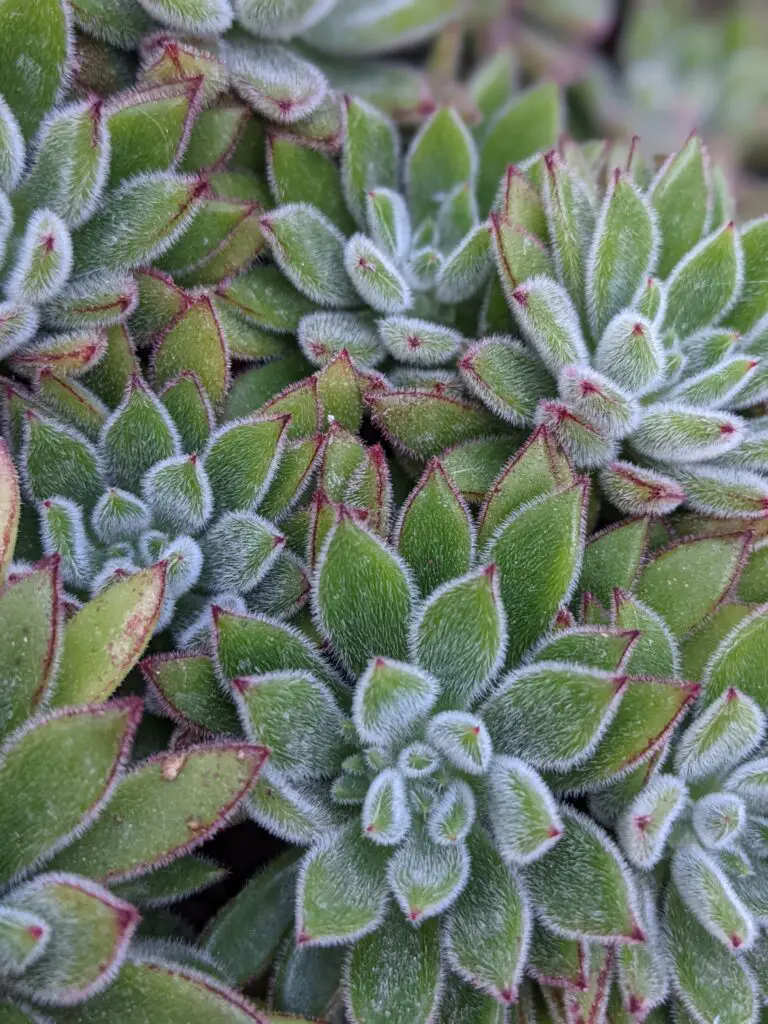
Additional Tips for a Thriving Echeveria
If you’ve been wringing your hands over your echeveria losing those precious bottom leaves, fear not! While we’ve tackled the main reasons for leaf loss, there’s so much more to a flourishing echeveria than simply avoiding pitfalls. Let’s chat about the sunny side of care – fertilization, repotting, and general TLC that can make your echeveria the envy of plant parents everywhere!
Lavishing Love with the Right Fertilizer
Imagine a diet with only water – sounds dreary, right? Well, your echeveria feels the same. It’s time to talk fertilizer – that scrumptious plant food that supercharges your echeveria. Go on, treat it to a balanced, half-strength, water-soluble fertilizer during the growing season. Just like a well-timed coffee works wonders for us, a sip of fertilizer can perk your plant right up. But remember, moderation is key – think of it as a gentle nudge, not a full-on shove.
The Art of Repotting
Have you ever felt cramped in a crowded elevator? That’s your echeveria every time it outgrows its pot. Repotting time is like moving to a roomier home, a place where your echeveria can stretch out its roots. Choose a pot that’s just a wee bit larger than the current one – too big, and you risk waterlogging the soil (and nobody likes soggy socks, right?). And don’t forget to use a well-draining succulent mix – your echeveria will thank you with growth.
General Maintenance or ‘How to Speak Echeveria’
Caring for an echeveria is like friendship; it thrives on attention and care. It’s about the day-to-day chit-chat, like removing dead leaves to prevent pests and ensuring it soaks up enough light – think of it as the plant equivalent of a sunbath at the beach. And here’s a pro tip: rotate the pot regularly to prevent your echeveria from leaning towards the light like a curious sunflower.
Finally, remember that your echeveria’s needs can change with the seasons. Being a vigilant plant buddy means keeping an eye out as the year unfolds – a little more water here, a little less there. But hey, guess what? You’re not in this alone.
Here’s a video brimming with succulent wisdom that’ll coach you through the A to Z of echeveria bliss:
Plant parenting is a journey – with a little know-how, some patience, and a sprinkle of love, you’ll have an echeveria that stands tall (figuratively speaking, of course) through all seasons. So roll up your sleeves, it’s time to get chatting with your charmer of a plant!
When to Seek Professional Help
Every gardener treasures the moment their Echeveria erupts in a splendid showcase of plump, colorful leaves. But when your Echeveria starts losing its bottom leaves, it might indicate a cry for help. Even after you’ve adjusted watering schedules and checked for pests, some issues might persist, signaling that it’s time to ring up a specialist. Let’s explore when dialing up a professional is your best bet to rescue your beloved Echeveria.
Picture this: you’ve done your due diligence checking for common culprits like overwatering and underfeeding, but the leaves of your Echeveria continue to droop and fall. This is the garden drama nobody wants a ticket to! Sometimes, despite our best efforts, plant maladies can stump even the most seasoned green thumbs. When your Echeveria’s health deteriorates beyond the usual troubleshooting steps, a plant specialist or a local nursery’s expertise might just be the elixir your succulent needs.
Unfamiliar Symptoms
Suppose you start noticing symptoms that aren’t listed in any guidebook—maybe your Echeveria’s leaves have taken on a mysterious hue or there’s an uncommon pattern of decay. These could be signs of a rare disease or an environmental stressor that’s not widely known. It’s akin to finding a peculiar bug on your code that doesn’t pop up in any forum. Time to call in the experts!
When your Echeveria starts resembling a prop from a sci-fi movie rather than a healthy plant, the clock is ticking. Reaching out to a professional can provide you with a swift diagnosis and treatment plan before your plant becomes a casualty to an unknown ailment.
Structural Concerns
Let’s say you’ve got an Echeveria that’s grown more lopsided than the Leaning Tower of Pisa. If structural issues arise—like stem weakness or severe etiolation—you’ll want expert advice on how to provide the right support system. It’s not just about aesthetics; an Echeveria toppling over can be a sign of a deeper, underlying health issue.
Without the proper support and possibly some surgical intervention from a pro, your Echeveria’s unique silhouette might not stand a chance. In these cases, there’s no shame in admitting that you’re out of your depth and seeking professional assistance.
Pest Invasion
Perhaps you’ve noticed some sneaky little critters making a meal out of your Echeveria. If you’re facing a full-blown infestation that’s more horror story than horticulture, it could be time to relinquish the reins. Pest control can be a delicate game of chess, and plant specialists hold the strategic moves that could save your succulent from a grizzly fate.
After all, there are few things more frustrating than an uninvited pest party at the expense of your green companion. Don’t watch your Echeveria become a buffet—get a plant doctor to prescribe the right pest repellent strategy!
And sometimes, just like how we stumble across life hacks on YouTube, plant tips and tricks can also be just a video away. Here’s one we’ve found particularly useful in understanding when to turn to a green-thumbed guru for help:
Always remember, there’s no harm in seeking advice when it comes to the health of your Echeveria. Often, expert insights can prevent further leaf loss and have your succulent back on the right track in no time. So, when you’ve exhausted your garden know-how, and ‘echeveria losing bottom leaves’ is the search term haunting your dreams, it’s probably time to phone a friend with a green badge. Your Echeveria will thank you!
Frequently Asked Questions
Are you puzzled by your Echeveria that’s shedding its lower leaves like it’s in a perpetual autumn season? You’re not alone! Let’s explore the common head-scratchers plant enthusiasts face when their cherished succulents suddenly throw a “leaf goodbye party.”
Why is My Echeveria Losing Bottom Leaves?
Imagine you’re all set to enjoy a cozy book night with your leafy companion, and out of the blue, your Echeveria’s bottom leaves decide to drop. This could be the plant’s cry for help, often due to overwatering or insufficient light. Yes, these tough love plants still need a tender touch!
How Can I Prevent Echeveria Leaf Loss?
Prevention is like preparing for a succulent marathon; you’ve got to get the conditions just right. Keep that watering can in check—too much enthusiasm can lead to soggy soils and droopy leaves. Place your plant buddy in a well-lit spot but save it from the scorching midday sun—think of it as sunscreen for succulents.
What are Some Quick Fixes for Falling Leaves?
When your Echeveria throws a tantrum, it’s time to get fixing. Adjust the watering, whisper encouraging words to your plant (seriously, they love it), and ensure it’s soaking up the perfect amount of sunshine. Sometimes, all they need is a little space—so consider repotting if things feel cramped.
Got more questions, or perhaps a story about your Echeveria? Drop a line in the comments and share your experience. And don’t forget to check out this handy video for more juicy tips on keeping your succulent happy and healthy!

